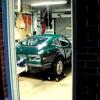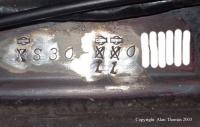Interesting findings and I hope it's that simple, but call me skeptical. Wouldn't be the first time someone thought they had a problem licked only for it to return again in the future.
To test your theory, get the car back to stock. Fuel rail back where it belongs, water passages as they were a couple days ago, etc. And then recreate your shake test. Shake the car as you did before at hot idle, and verify that fuel glurps out of the bowl vent tube like it did before. Has to be repeatable.
Then once you are positive that you have the car in the state where the fuel overflow will occur, shut the motor off, give it ten seconds or so for pressures in the fuel lines to stabilize and then repeat the shake test.
If the theory about flash boiling the fuel by contact with the coolant passage inside the carb is correct, you will get a glurp of fuel out the vent tube even with the engine not running. But if you do NOT get a glurp with the engine off, then you're chasing a red herring.
Reason being, if the overflow is caused by flash boiling fuel that is coming in contact with that internal heated passage, it shouldn't matter whether the car is running or not. Ten seconds after you shut off the engine, that passage is still at the same temperature, and the fuel level in the bowl is still at the same level. Results shouldn't matter whether the engine is running or not.
Does that make sense?
 Subscriber
Subscriber 2Points3,769Posts
2Points3,769Posts














